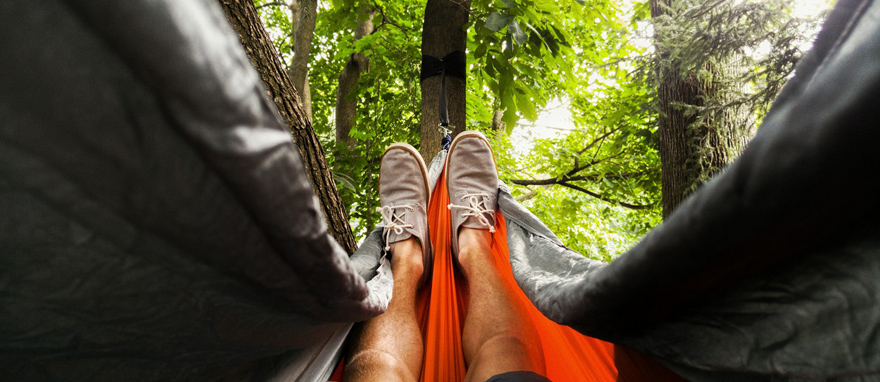 Is there anything better than lazing away a summer day in a hammock under the shade of two beautiful trees?
Is there anything better than lazing away a summer day in a hammock under the shade of two beautiful trees?
The only thing to complete that relaxing picture is making sure your trees don’t suffer for your enjoyment.
If your idealized vision of hammock surfing includes tying a rope between two trees, it’s time to rethink your tree-tying strategy. Tree damage is especially likely if you use a thin rope when setting up the hammock.
Rope ties can cut into the bark of even the sturdiest of trees, opening it up to attacks of insects and diseases. Ropes can also strangle or girdle the tree making it difficult for it to access water and necessary nutrients to remain healthy. When tying ropes to smaller tree trunks, you can weaken the tree so much it won’t be able to recover.
If you’re intent on doing some hammock-swinging this summer, make sure you have the right trees and gear.
Choose Your Trees Carefully
Some people joke about hanging the hammock on the smallest tree possible, just in case it falls on you. Others say to set the hammock to the height you could easily fall without hurting yourself.
But personal safety isn’t a laughing matter, so look for two mature, healthy trees with trunks that can support your weight. Trees should be standing about 12-15 feet apart. Be sure to look up to check for any dead or hanging branches. Then look down to see what will be underneath the hammock.
Use Tree Saver Straps
Instead of cloth or plastic rope, protect your trees with special tree saver straps that minimize tree damage. These wide straps (at least 1 inch wide) are made from nylon or polyester webbing that will go around each tree’s trunk. Because of the wide webbing, they’re designed to reduce tree girdling and prevent damage to the bark and underlying layers.
As an alternative to tree saver straps, you could pad the rope with rope covers or lengths of garden hose that keep the rope away from the bark.
Never pound nails, screw bolts or fasten any kind of attachment directly into the tree.
Hang the Hammock
Find the thickest part of the tree’s trunk, about 4 ½ feet from the ground and wrap the strap around the tree. Straps will have a loop or ring for looping around the tree until it’s snug. Use heavy-duty S-hooks to connect the hammock to the strap and repeat on the other tree.
For safety’s sake, make sure the lowest point of the hammock is about 18 inches off the ground.
If you plan to leave your hammock up all summer, be sure to check the straps every time you use it. Make sure they haven’t become overtightened on the tree or loosened in between use.
At the end of summer, remove the straps and hammock. Not only will that make your hammock last longer, it will avoid the problem of tight straps girdling the tree as it grows.
If you want to avoid damage to your trees altogether, enjoy a portable hammock on a stand instead of one that hangs. You’ll still get to swing in the shade, without putting any stress on your trees.



